Boekhoutia Q.M. Wang & F.Y. Bai gen. nov.
Index Fungorum number: MB828807; Facesoffungi number: FoF
Etymology: the genus is named in honour of Dr. Teun Boekhout for his research contributions to yeast taxonomy.
This genus is proposed for the branch represented by strain CGMCC 2.4539, which formed a separate clade from Kurtz- manomyces. Member of the Chionosphaeraceae (Agar- icostilbales). The genus is mainly circumscribed by the phylogenetic analysis of the seven genes dataset, in which it occurred as a separate branch within Chionosphaeraceae (Fig. 4A).
Sexual reproduction not known. Colonies orange red, butyr- ous. Budding cells present and blastoconidia produced at the end of a stalk-like conidiophore. Conidiophore single or multiple, usually multifurcate. Pseudohyphae and hyphae not produced. Ballistoconidia formed.
Type species: Boekhoutia sterigmata Q.M. Wang, F.Y. Bai & A.H. Li.
Note: – Boekhoutia and its close relative Kurtzmanomyces can produce stalk-like conidiophores, the former usually produces multifurcate conidiophores; each conidiophore of the latter can produce sequential multiple blastoconidia (Sampaio 2011b). Boekhoutia does not assimilate ethanol and D-mannitol, whereas all species of Kurtzmanomyces assimilate these two carbon sources.
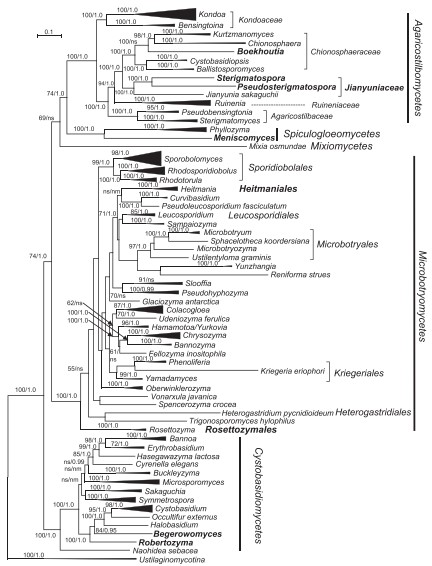
Fig. 4. Phylogenetic tree inferred using the combined sequences of RPB1, RPB2, TEF1, CYTB, SSU rDNA, LSU rDNA D1/D2 domains and 5.8S rDNA, depicting the phylogenetic positions of new taxa (in bold) within Pucciniomycotina. The tree backbone was constructed using maximum likelihood analysis. Bootstrap percentages of maximum likelihood analysis over 50 % from 1 000 bootstrap replicates and posterior probabilities of Bayesian inference above 0.9 are shown respectively from left to right on the deep and major branches. Bar = 0.2 substitutions per nucleotide position. Note: ns, not supported (BP < 50 % or PP < 0.9); nm, not monophyletic. The new taxa are in bold.
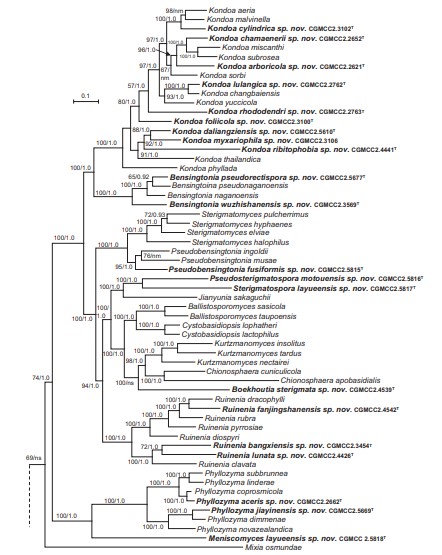
Fig. 4. (Continued).
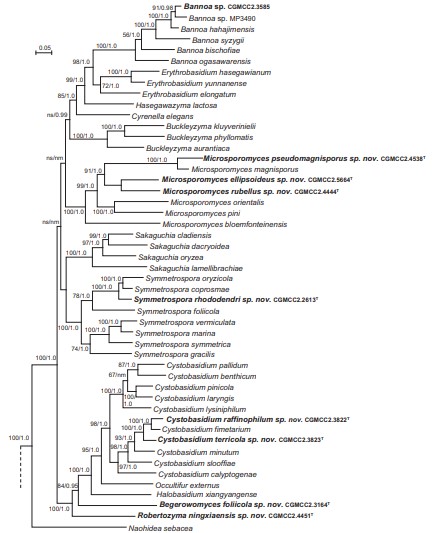
Fig. 4. (Continued).
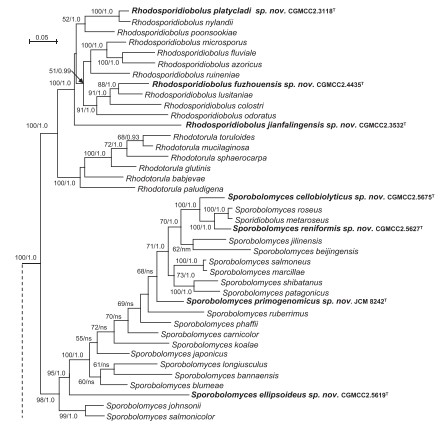
Fig. 4. (Continued).
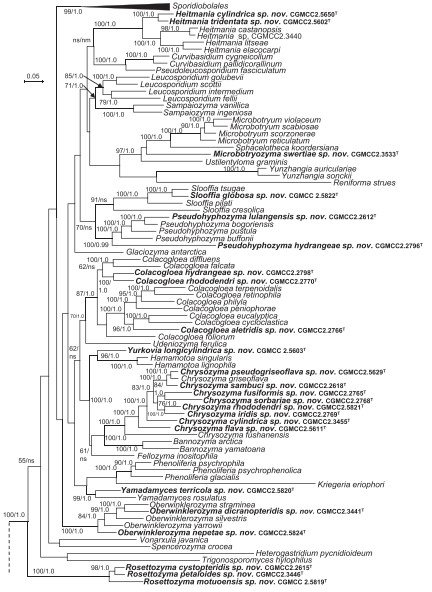
Fig. 4. (Continued).
Species
